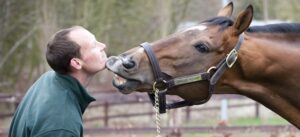Big ships take time and plenty of ocean to change course. In that respect, British jumps breeding is the equivalent of a very big ship indeed. The Cheltenham Festival again appeared to demonstrate how far Britain is behind France and Ireland. Or did it?
Some will think that nothing has been done or is being done to redress the clear imbalance as measured by a race-success barometer, but a change of course and direction was commenced 15 or so years ago, and there is strong evidence that whilst it’s a very long way from plain sailing, British jumps breeding is beginning to feel warmer winds.
The first radical change came when the TBA and BHA worked to enhance the fillies’ and mares’ race programme, which is enthusiastically supported and almost taken for granted today but required significant promotion and conviction to persuade owners and trainers that owning females represented opportunity, rather than the occasional good racemare being the exception to that rule.
If there was to be a start anywhere, it had to be with rebuilding on solid foundations, by improving and retaining quality mares who raced successfully and then went to the breeding shed. When the Elite Mares’ Scheme was introduced 12 years ago by the TBA, supported with funding from the Levy Board, it did not receive universal acclamation. Today it is an outstanding success.
Owners of mares proven on the racecourse with a rating of 130+ or have produced high-achieving progeny are rewarded with subsidised, or in some cases free, nominations to eligible British stallions. The scheme has grown from 194 qualified mares to 351 high-quality, race-proven breeding stock, which compares very favourably with numbers in our neighbours’ ownerships.
The EMS has also encouraged investment in stallions and Britain now has a growing share of high-quality mates for these top-performing mares. Whilst Britain may not compete numerically, stallion studs have stepped up and made available some highly-rated sires at commercial rates. It is only a matter of time before one heads the sires’ list.
It might have been understandable if the TBA NH Committee had stopped there. However, members recognised that it was one thing to have the races and another to encourage the production of fillies and mares, but most importantly demand needed to be stimulated, which resulted in the Mare Owners Premium Scheme.
Offering MOPS bonuses of up to £10,000 for registered mares successful in a qualifying race was groundbreaking stuff, which began to turn the dial as an attraction to buy and race these females. MOPS did an important job before the Great British Bonus was introduced in 2020, which doubled the possible bonus that could be won from MOPS. It clearly now pays to breed, buy and race British.
Reasonably, perhaps, you might expect the TBA NH Committee to draw breath here, but not a bit of it. They have recently completed a detailed comparison analysis of Britain versus its competitors and seen the evidence that getting horses jumping earlier not only provides performance advantage but soundness as well.
Hence the introduction of the Junior NH Hurdles programme, which has elements of the French system that seems to have been so successful. The mission now is to persuade the jumps community to replicate the degree of persuasion and conviction behind the opportunity for racing fillies and mares all those years ago.
So, is this working? Well, GBB registrations are up year on year by 11 per cent for the 2023 foal crop and comparing the 2020 number of 635 registered foals against the 2023 total of 852, it seems reasonable to think so.
However, it is just a start – a good start at that – but there is much more to be done and British racing can rest assured that the TBA NH Committee will continue to press the importance of a robust and sustainable jumps breeding base. So, as a next step expect more intervention and incentive to encourage getting horses jumping earlier in their careers.
All hands are on deck! This ship has changed course, it is picking up speed and will soon be coming over the horizon.



